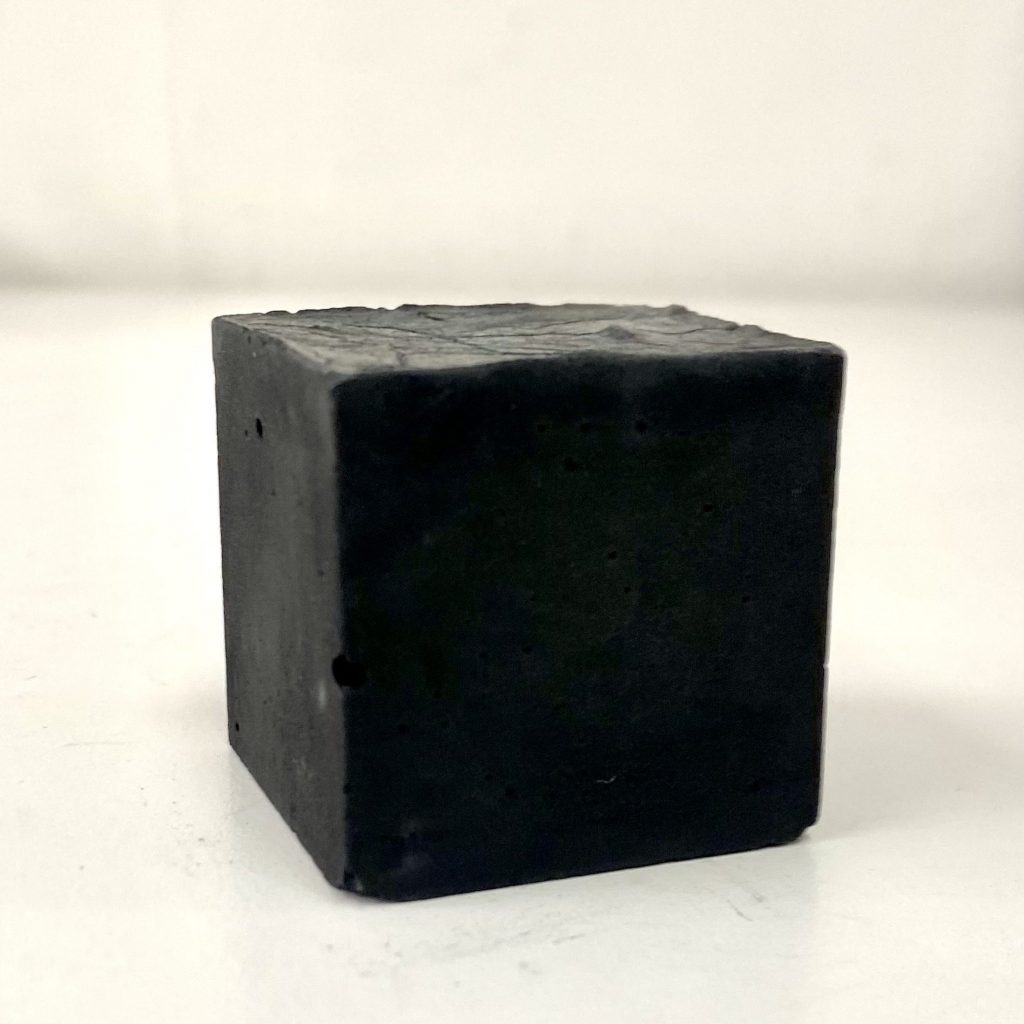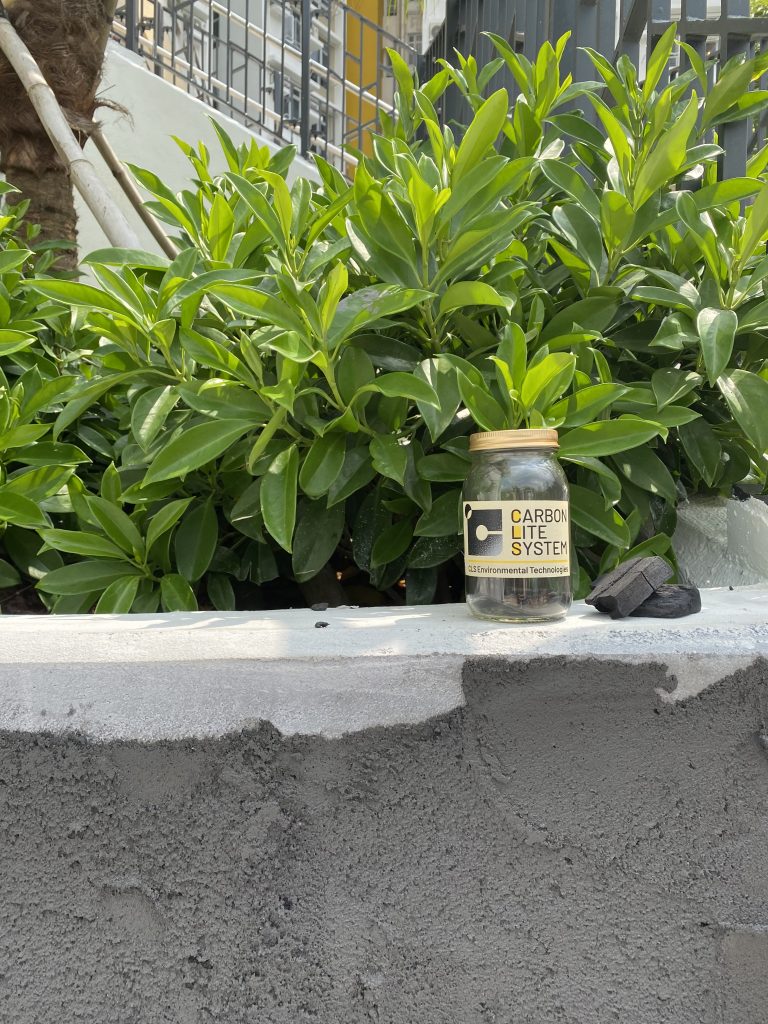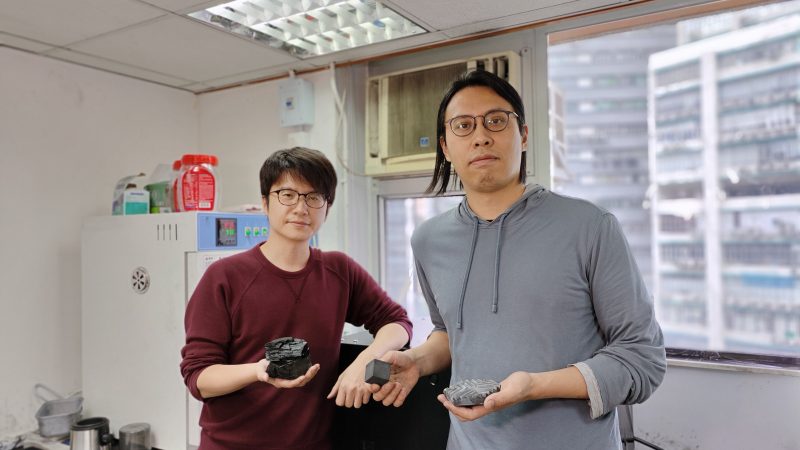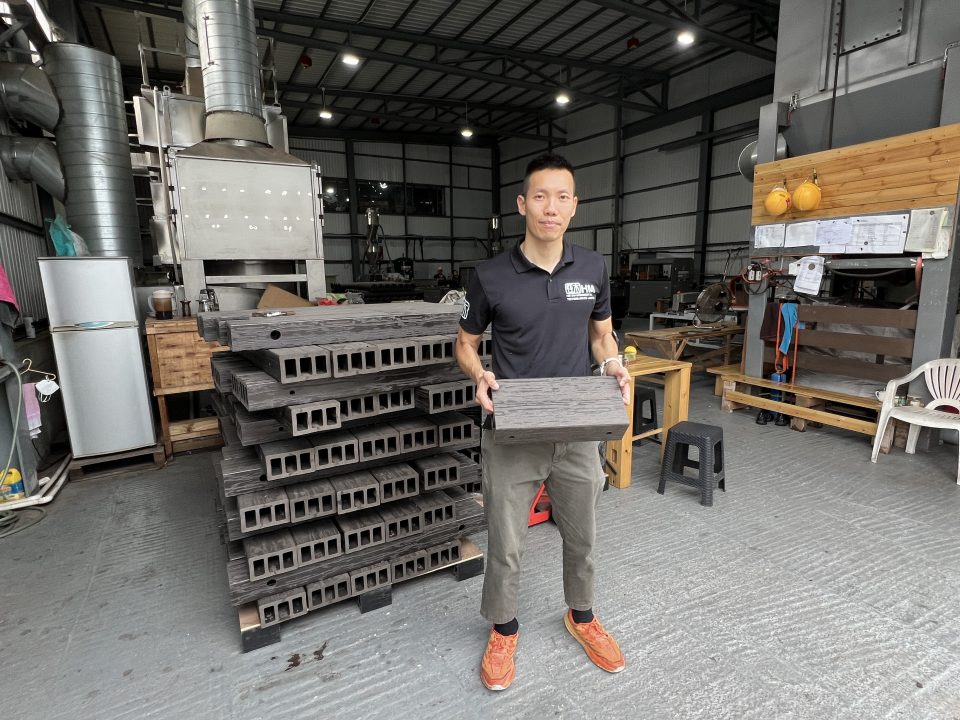
Muuse on a Cuppa of Holistic Circularity through the Reusables Rental System
January 12, 2024
V Cycle: Circular Economy from Responsible Recycling & Love for Community
March 19, 2024Carbon Lite System: From Wood Waste to Net Zero Building, all via Technology
Wood is a popular material in many industries – think about wooden pallets in logistics and wooden boards used during construction and shop renovation. Sadly, that also implies an alarming amount of wood waste: according to the EPD Waste Statistics for 2022 report[1], an average of 176 tonnes of industrial and commercial wood waste was dumped to the landfill every single day, while only 11,800 tonnes of wood were recycled in a year. Especially for the construction industry, this is not the end of story – cement production is accounting for nearly 8% of global CO2 emissions[2]; however, the IEA foresaw the infrastructural needs of developing economies[3] would mean the demand of cement won’t be that friendly to our planet. That’s exactly why Carbon Lite System (CLS), a local tech startup, decided to solve the two problems in one go with technology: upcycling wood waste into biochar, a material that can be used to create “greener” concrete.

| The Carbon Lite System (CLS) Environmental Technologies is founded in 2020 by Pirry Leung and Dr Oliver Yeung. The environmental tech startup specialises in equipping their clients with technology application in waste management and circular economy solutions. Through research & development of engineered biochar, a durable and VOC-absorbing material created from wood waste and food waste by carbon sequestration, which could be used to make concrete greener by incorporating biochar as a partial replacement for cement in the mixture. The company focuses on developing greener building materials, including plaster, bricks, etc., by utilising biochar and reducing the reliance on cement. In a short 3 years since its foundation, CLS has garnered several awards, including the Social Impact Prize of Eureka Nova Impact Kommons. It is also the winning team of Scale-up Stage of Hong Kong SDG Hub and HK Tech 300 of City University of Hong Kong. |
It was the passion in sustainability that brought the two R&D experts together to form CLS. Pirry, who has already founded multiple environmental tech startups, said, “I’ve been in the recycling industry for years, and I met Oliver through one organic waste recycling project.” Oliver continued, “Through everyday conversations, we found that we have many things in common: R&D background, the interest in recycling and upcycling technologies, and that we both saw the commercial value of wood waste. That’s why we had the idea of starting a business together.”
Building the Green Block of a Low-carbon Construction Industry
[Innovation]
Graphene is a type of biochar that has exceptionally high tensile strength, heat/electrical conductivity and transparency. It is 200 times stronger than steel, making it one of the strongest materials known to man. It is also lighter than paper and is the thinnest 2D material in the world. Since its rediscovery in 2004, numerous companies and laboratories have worked to develop technologies and commercial applications of graphene. For example, it is used in semiconductor, LED lights, touchscreens of electronic devices, medical devices and energy storage (e.g., batteries, supercapacitors and solar cells).
In operation, CLS first collects wood waste and organic waste and converts them into biochar via carbon sequestration. The resulted biochar will then be added into construction materials the likes of cement, plaster and wall paints, turning them into a greener version of these materials. With biochar, these construction materials not only are stronger and more durable, but can lock up VOCs (volatile organic compounds) and greenhouse gas methane released from rotten wood pallets, while absorbing air pollutants and therefore improving air quality. It is estimated that each 1kg of biochar can seal ~3.5kg of CO2 in soil.
Previously, CLS collaborated with Hip Hing Construction (wholly owned by NWS Holdings Limited) and proposed to apply to the Hong Kong Housing Authority for a permit to use biochar for construction. Their intention is to utilise these materials for the Public Rental Housing Development at Queen’s Hill Site, and make it the first construction project with the application of biochar construction materials. Other than that, CLS is actively engaging with construction and paint companies, starting conversations and offering samples for business development.

When asked about why the construction industry CLS focuses, the answer was simple: replacing merely 1% of traditional cement already brings a big impact. Based on information and calculations provided by CLS, Hong Kong produced approximately 5.75 million cubic metres of ready-mixed concrete in 2017 and this figure was expected to increase to 6.7 million cubic metres in 2022[4]. While the greenhouse gas (GHG) emissions associated with ready-mixed concrete production vary depending on the type of cement used, such production can result in carbon dioxide (CO2) emissions ranging from 100 to 400 kg of CO2 per cubic metre[5]. If we assume that the production of 6.7 million cubic metre of concrete results in approximately 300 kg of CO2 per cubic meter, then the production of concrete alone in Hong Kong contributes to around 20 billion tonnes of CO2. Replacing just 1% of cementitious material of concrete with biochar (a carbon neutral material) could lead to a reduction of around 200 million tonnes of CO2 per year. That said, there is no lack of challenges ahead, the biggest being the approval and authorisation from the government. Pirry explained, “theoretically, adding graphene into cement creates stronger concrete; you use less raw materials and it cuts costs. But actually, the amount of cement is regulated by the Buildings Department. How can you prove that you can maintain the same stability while using less cement? That’s our biggest challenge for now.” Their goal is to have biochar included in the procurement list of the Architectural Services Department.
Construction materials companies aside, CLS is also working on exploring and improving the heat conductivity and dissipation ability of graphene. “It’s pretty much a norm to use metal heat sink for temperature regulation of devices,” Oliver continued, “with graphene being a cheaper alternative in terms of cost, we’d like to promote it as a more cost-effective, greener option to clients from other industries as well.”
The Secret of Success: Create Demand & Change
[Customer Supplier Relationship]
As for the company structure, the two founders remain the compass of CLS: Oliver for R&D and Pirry for business development. The team also consists of equipment assembly consultants and specialists in R&D and production. While the duo has built their reputation in innovation among clients and government departments, they both agreed that innovation shouldn’t be the sole edge of the brand, especially when this is an era of innovation and ever-changing regulations. Instead, they would like to help clients transform with in-the-know knowledge and services targeting regulation compliance.
“Graphene is nothing close to a ‘new’ material. It became popular with the trend of ESG (environmental, social, and corporate governance); when we started discussions with some government experts, many of them had already known about the material. What we all are waiting for is the change, or update, to legislation.” Oliver remarked. “For most construction contractors, a sudden change (replacing traditional building materials with the biochar ones) involves extra cost risk. We totally understand – for buildings, it’s always safety first. That’s exactly why we are focusing on building reputation and trust for the product. We also welcome project-based collaboration, which is the perfect chance for the client to try biochar, enjoy the benefits and make greener options, starting from fulfilling ESG laws and regulations.”
“For now, we intentionally keep our project scale small,” Pirry added. “The reason behind is the amount of graphene to be used. I mentioned that we are talking to one paint company; the amount required for the paint of one building is probably 1% of the total amount of paint, much less than the amount needed for the cement of the same building. It means, without compromising on the effect and influence we want, our production cost is lower and more controllable. We’d like to take it slow in business expansion, build a production line, buy equipment and recruit more staff only after we’ve secured stable income.”
And CLS remains tiny but mighty when it comes to achieving UNSDGs. At the moment, the startup is encompassing four SDGs, namely Goal 3: Good Health and Well-being, Goal 7: Affordable and Clean Energy, Goal 9: Industry, Innovation and Infrastructure, and Goal 13: Climate Action. While big corporates are eagerly building their brand through the showcase of their ESG initiatives to the public, Pirry considered ESG initiatives, whether it is about environment or social, instead of one single trait, a must for SMEs.
Carbon Lite System is a winner of New World Development’s Impact Kommon 2021, and one of the invited exhibitors of Knowledge Primer 5 of Partnership for Sustainability Leadership in Business (PSLB). The PSLB project is initiated by the Centre for Civil Society and Governance, The University of Hong Kong, and supported by The Hongkong Bank Foundation. It is aimed at fostering sustainability leadership and collaboration in the business sector of Hong Kong through knowledge transfer, capacity building, and network development; in particular, the Project strives to foster strong partnerships between big corporations and small and medium-sized enterprises (SMEs) in pursuit of sustainability.
[1] MONITORING OF SOLID WASTE IN HONG KONG – Waste Statistics for 2022, Environmental Protection Department, www.wastereduction.gov.hk/sites/default/files/resources_centre/waste_statistics/msw2022_eng.pdf
[2] Ellis, L. D., Badel, A. F., Chiang, M. L., Park, R. J.-Y. & Chiang, Y.-M. Proc. Natl Acad. Sci. USA 117, 12584–12591 (2020). www.pnas.org/doi/full/10.1073/pnas.1821673116
[3] Tracking Cement, International Energy Agency, www.iea.org/energy-system/industry/cement
[4] Md. Uzzal Hossain, Yahong Dong, S. Thomas Ng. Case Studies in Construction Materials 15 (2021). https://hub.hku.hk/bitstream/10722/302486/1/content.pdf?accept=1
[5] Silva F B, Oliveira L A, Yoshida O S, John V M. Variability of environmental impact of ready-mix concrete: a case study for Brazil. IOP Conf. Series: Earth and Environmental Science 323 (2019).








